Optimization of medium composition for the production of doramectin by Streptomyces avermitilis with response surface methodology
2019-10-10YangShihongHanWeiandZhangXiaolin
Yang Shi-hong, Han Wei and Zhang Xiao-lin
(1 Academy of State Administration of Grain, Beijing 100037; 2 Wuhan Polytechnic University, Wuhan 430023)
Abstract The optimal fermentation medium for doramectin production by Streptomyces avermitilis XJ-8-115, was studied using statistical experimental design and analysis.The Plackett-Burman design (PBD) was used to evaluate the effects of eight medium components on the production of doramectin, and the steepest ascent path was adopted to determine the optimal region of the medium composition, and the optimum composition of the fermentation medium for maximum doramectin yield on the basis of a five-level three-factor central composite design (CCD).The results showed that: PBD test showed that dry yeast, MgSO4 and NH4Cl were the most significant ingredients.The optimum medium was obtained by response surface methodology (RSM), namely 75g corn starch, 18g dry yeast, 1.35g KCl, 0.16g MgSO4, 1.8g K2HPO4·3H2O, 0.012g FeSO4·7H2O, 0.045g Na2Mo4·2H2O, 0.09g NH4Cl, 0.005g CoCl2·6H2O and 2g CaCO3.A maximum doramectin yield of 103.54mg/mL was obtained and the production increased 1.80 times compared with that using the original medium (36.93mg/mL), with only 2.22% differences compared with the forecast by RSM.
Key words Response surface methodology; Streptomyces avermitilis; Doramectin; Fermentation; Medium optimization
1 Introduction
Doramectin, 25-cyclohexyl-5-O-demethyl-25-de(1-methylpropyl)-avermectin, is a potent endectocide of macrolide antibiotics of avermectin derivative.Feeding cyclohexanecarboxylic acid could synthetize doramectin during the fermentation process of the mutant strain ofStreptomyces avermitilis[1-2].With the high and wide antiparasitic activity, high bioavailability and long validity of drug residues, and easy to grasp the route of administration, doramectin has been applied to veterinary clinical on cattle, horse, sheep, goat, pig, camel and dog and so on[3].Doramectin is considered as one of the most potential and effective veterinary medicine and pesticides for development at present[4].But owing to low yield and high fermentation costs, the wide range of doramectin is limited for application.
Medium components play a very important role in enhancing the doramectin production and are different for each microorganism.Therefore, the required constituents and their concentrations have to be optimized accordingly.Conventional methods for optimization of medium and fermentation conditions involves varying one parameter at a time and keeping the others constant, is time consuming and expensive, when a large number of variables are to be evaluated[5].And this method also often leads to an erroneous understanding of the system behavior and a lack of predictive ability[6].Plackett-Burman design (PBD) is an economic and effective experimental design method of a kind of two levels.Although it cannot examine the interaction between each factor, it could use the least experiment times to quickly and effectively screen the main influencing factors from numerous examine factors[7].Response surface methodology (RSM) is one of the popular used optimization procedures.It is a simple and convenient approach widely applied in the optimization of fermentation process, for example, medium components for alkaline protease production[8], conidiopores production[9]and production of other metabolites[10-12].RSM can be used to evaluate the relative significance of several affecting factors even in the presence of complex interactions.It has been much reported for successful application of RSM to enhance production by optimizing the culture media.
In this study, the optimization of fermentation media ofStreptomyces avermitilisXJ-8-115 was optimized using RSM to enhance the doramectin yield.In the first step, a PBD was used to determine the likely effects of medium components on doramectin production (Based on the "one-factor-at-a-time" experiments).In the second step, the steepest ascent path was adopted to approach the optimal region.Last, the significant factors were optimized using CCD and RSM analysis.
2 Materials and methods
2.1 Microorganism
Streptomyces avermitilisXJ-8-115, a doramectin producer in this research, was isolated in the fermentation laboratory of Academy of State Administration of Grain, China.It was stored in 20% glycerol at -80℃.Prior to each experiment, the organism was sub-cultured from the frozen stocks onto agar slants.
2.2 Media and culture conditions
The medium for agar slant consisted of (per liter): starch soluble 4g, yeast extract 4g, malt extract 10g, CoCl2·6H2O 5mg, agar 20g, pH7.0.The seed medium consisted of (per liter): starch soluble 30g, yeast extract 2g, soya peotone 2g, CoCl2·6H2O 0.005g, pH7.0~7.2.The basic fermentation culture medium consisted of (per liter): Starch Soluble 70g, Yeast Extract 16g, K2HPO4·3H2O 0.5g, MgSO40.25g, KCl 4g, CoCl2·6H2O 0.005g and CaCO32g, pH7.0~7.2.In the medium optimization, the concentration of culture medium was changed according to the required.The media was sterilized at 121℃ for 30min, and then cooled to room temperature.For the seed preparation, a colony of cells was picked from an agar slant culture, placed into 50mL of the sterile seed medium in a 250mL Erlenmeyer flask, and incubated at 28℃ on the rotary shaker (180r/min) for 2d.6% (V/V) of the seed culture was inoculated.After cultivated for 2d, 300mg/mL cyclohexanecarboxylic acid was added into the fermentation broth and then the strain was cultivated continually for 8 days at 29℃ on the rotary shaker (240r/min).
2.3 Analytical method
Doramectin: 2mL methanol and 1mL fermentation broth were added to in a 10mL tube, which was socked for more than 30min, and oscillated per 10min.After centrifuging (3,500r/min, 10min), the supernatants were analyzed by high-performance liquid chromatography (HPLC, Waters 515/2,478, USA) using a Agilent C18reverse phase column(150mm×4.6mm, Fill hole 5mm).The mobile phase was methanol-acetonitrile-water (45:45:10,V/V/V).The flow rate was 1mL/min at 245nm.
Biomass content: it was evaluated by gravimetry.The culture sample (10mL) was centrifuged 3500r/min for 10min, and the cell was washed twice with distilled water, dried to constant weight at 105℃, and then weighed.
2.4 Experimental design
2.4.1 Plackett-Burman design
PBD is an efficient and effective approach to the systematic investigation and evaluation of the effects of medium components.Each variable was tested at two levels, namely a high (+1) level and a low (-1) level[13-15].The experimental design with the name, symbol code, and actual level of the variables is shown in Tab.1, whereas Tab.2 shows the detail of the design and the results of analysis was shown in Tab.3.Doramectin production was carried out in triplicate and the average value was taken as the response.The variables with confidence levels above 90% were considered to have significant effect on doramectin production and thus used for further optimization.
2.4.2 The steepest ascent path experiment
To move rapidly towards the neighborhood of the optimum response, we used the steepest ascent path.The experiments were adopted to determine a suitable direction by increasing or decreasing the concentrations of variables according to the results of PBD[16].Level of the variables was shown in Tab.4.
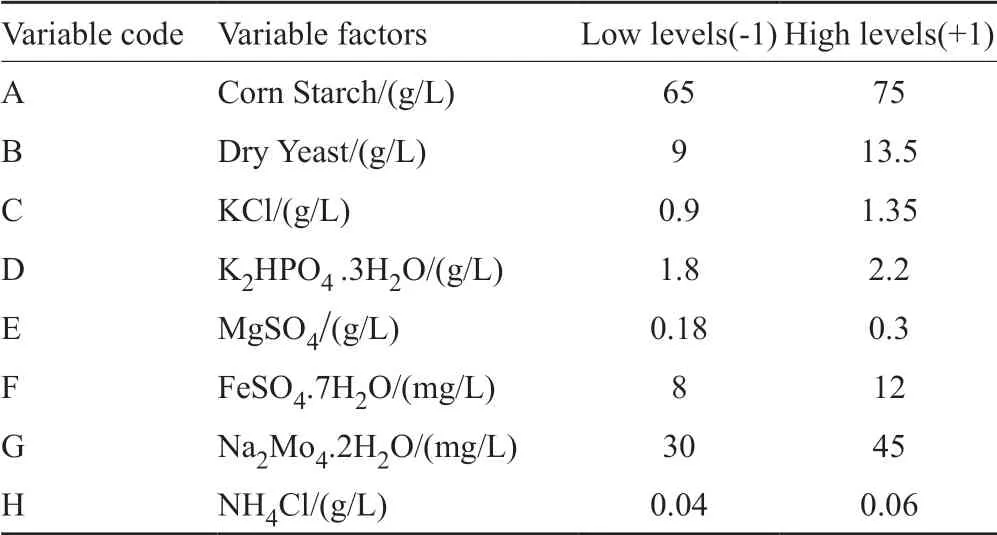
表1 Plackett-Burman设计试验的因素和水平Tab.1 Nutrient screening a Plackett-Burman design
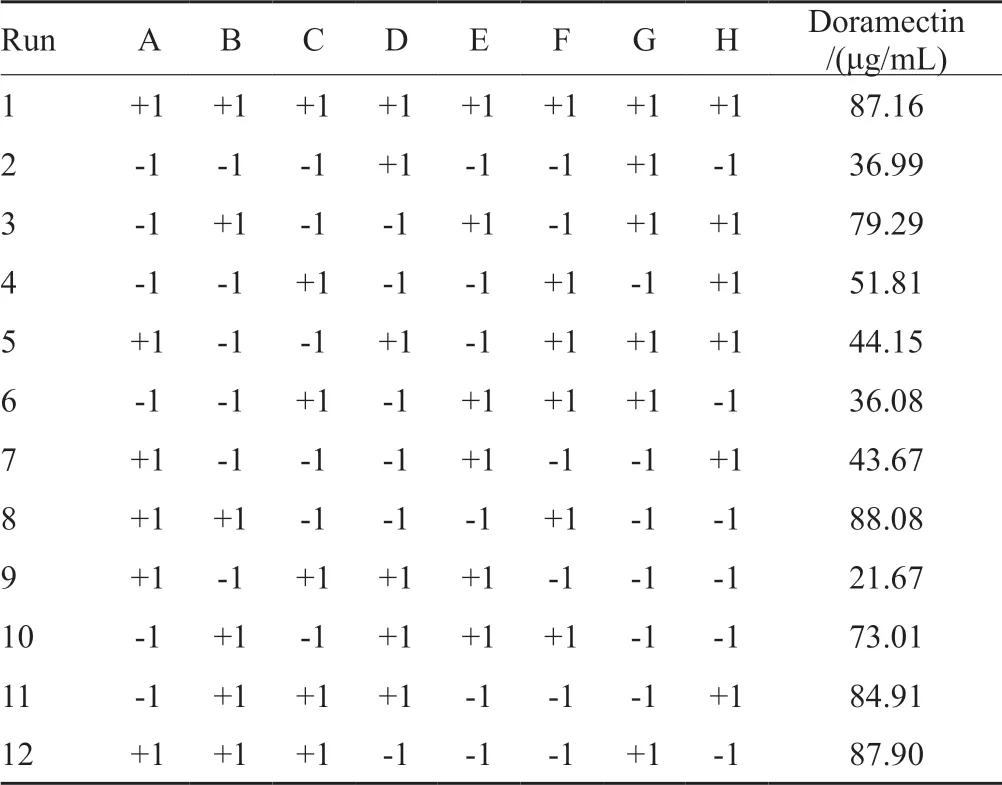
表2 Plackeet-Burman设计的试验组和结果Tab.2 The experimental design using the Plackeet-Burman method for screening of the media nutrients

表3 统计学分析(相关性、T-检验和显著性)Tab.3 Coefficients, T-values and significance levels
2.4.3 Central composite designs and response surface methodology
To describe the result of the response surface in the optimum region, a central composite design and response surface methodology was performed.The levels of each factor and the design matrix are given in Tab.5.The low, middle, and high levels of each variable were designated as -1.68, -1, 0 and 1, 1.68, respectively.In order to correlate the response variable to the independent variables, the yield was fit according to the following second-order polynomial model:
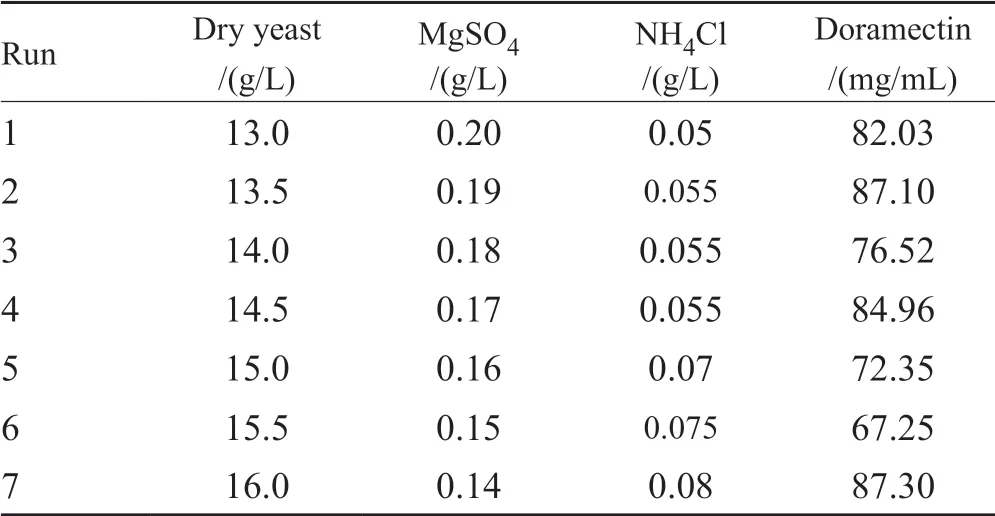
表4 最陡爬坡试验的设计和结果Tab.4 Design and results of steepest ascent path experiment

WhereYis the response variable value,b0is the interception coefficient,biis the coefficient of the linar effect,biiis the coefficient of quadratic effect,bijis the coefficient of interaction effect, wheni<jandk, the numbers of involved variables[17-19].
2.4.4 Statistical analysis
Software JMP4.0.0.5 (SAS Institute Inc., North Carolina, USA) and Design Expert 6.0.5 (Stat-Ease Inc, Minneapolis, MN) were used for the experimental designs and statistical analysis.
3 Results and discussion
3.1 The screening stage: the fractional factorial design and analysis
The importance of the eight medium components, namely corn starch, dry yeast, KCl, MgSO4, K2HPO4.·3H2O, FeSO4·7H2O, Na2Mo4·2H2O and NH4Cl, was investigated for doramectin production using PBD.Tab.3 showed the effects of these components on doramectin production.The analysis showed that dry yeast, MgSO4and NH4Cl had confidence levels above 90%.Hence, they were considered as the most significant factors that affect doramectin production.Others had low confidence levels (P>0.1) and were considered as the insignificant factors.
3.2 The steepest ascent path experiment and analysis
PBD results indicated that the effect of the positive factors (dry yeast and NH4Cl) and the negative factor (MgSO4).Thus, increasing dry yeast and NH4Cl concentration and decreasing MgSO4concentration could result in a higher production of doramectin.The steepest ascent path design was based on the PBD results.Dry yeast and NH4Cl moved along the route in which the concentration increased, whereas that of MgSO4decreased.But other factors' levels were according to the positive and negative effects, positive effect factors were taken high levels while the negative effect factors were taken low levels.Tab.4 shows the result of the path of steepest ascent experiment.

表5 中心组合设计的因素和水平Tab.5 Levels of the variables tested in CCD
Tab.4 showed the result of the steepest ascent path experiment.The maximum production of doramectin was obtained when the parameters included 16g/L dry yeast, 0.14g/L MgSO4and 0.08g/L NH4Cl.This result suggested that the points might be near the region of the maximum response.
3.3 The CCD and response surface analysis
The CCD experiment design and the results obtained for doramectin production are presented in Tab.6.The results were fitted with a next order polynomial equation.The values of regression coefficients were calculated and the fitted equations for predicting doramectin yield (Y) were

WhereX1is dry yeast concentration;X2is MgSO4concentration;X3is NH4Cl concentration.
The analysis of variance for the refined model is shown in Tab.7.The modelF-value was 20.53.The goodness of fit of the model was tested by the determination coefficient (R2).In such a situation, (R2=0.9487) indicate that only 5.13% of the total variations were not explained by the model.The adjusted determination coefficient (R2Adj=0.9024) was also high to support for a high significance of the model.Meanwhile, the coefficient of variation (C.V.=2.44%) indicated a better accuracy and dependability of the completed experiments.Of the model,X1,X3,X12,X22, andX32were the significant variables at the 99% probability level.X2was significant at the 95% probability level.In contrast,X1X2,X1X3andX2X3had no significant influence on the production of doramectin.X1,X2, andX3positively effected doramectin yield, whileX1X2,X1X3andX2X3negatively affected doramectin yield.
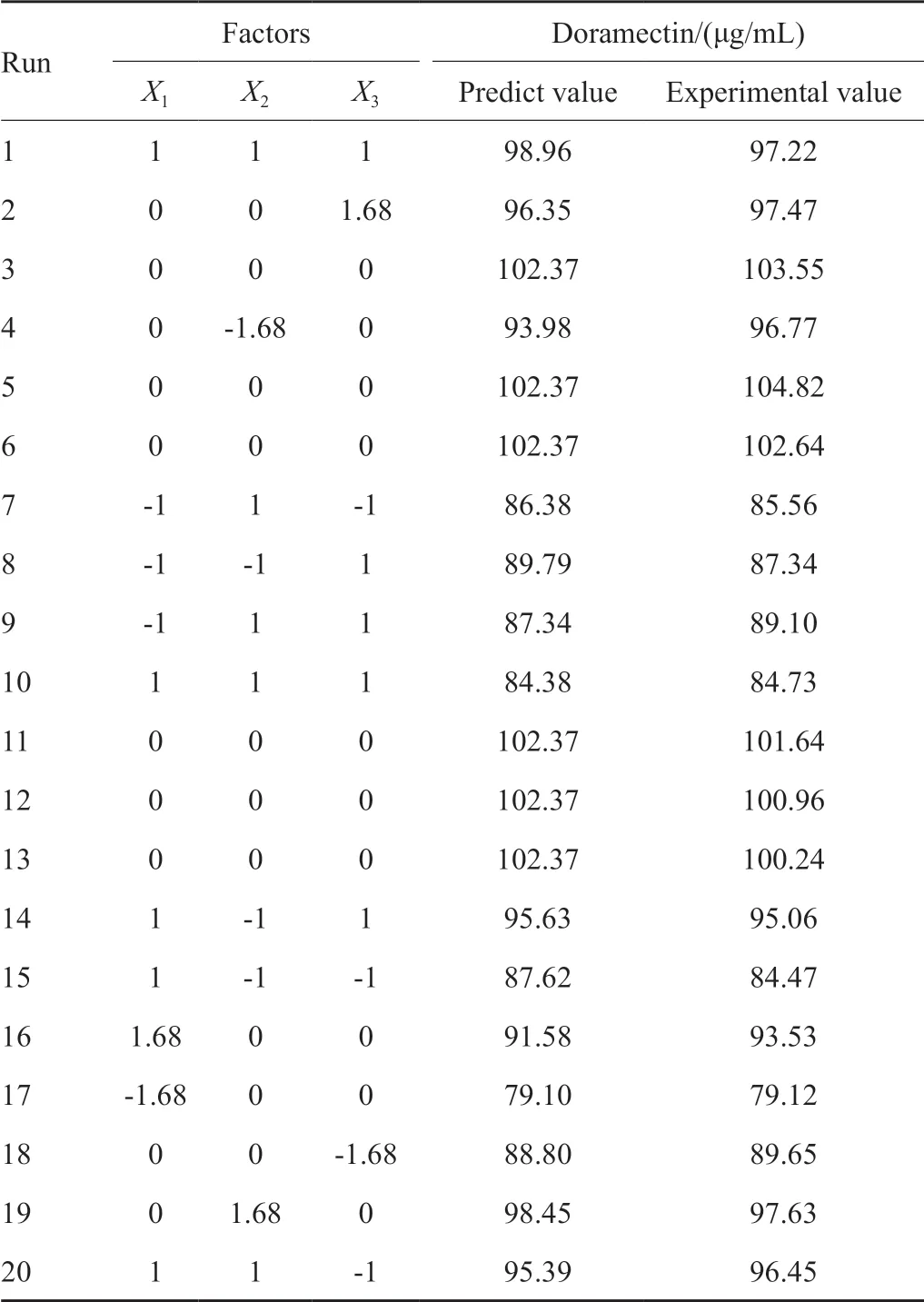
表6 中心组合设计的试验结果和预测值Tab.6 Experimental design matrix and results of CCD
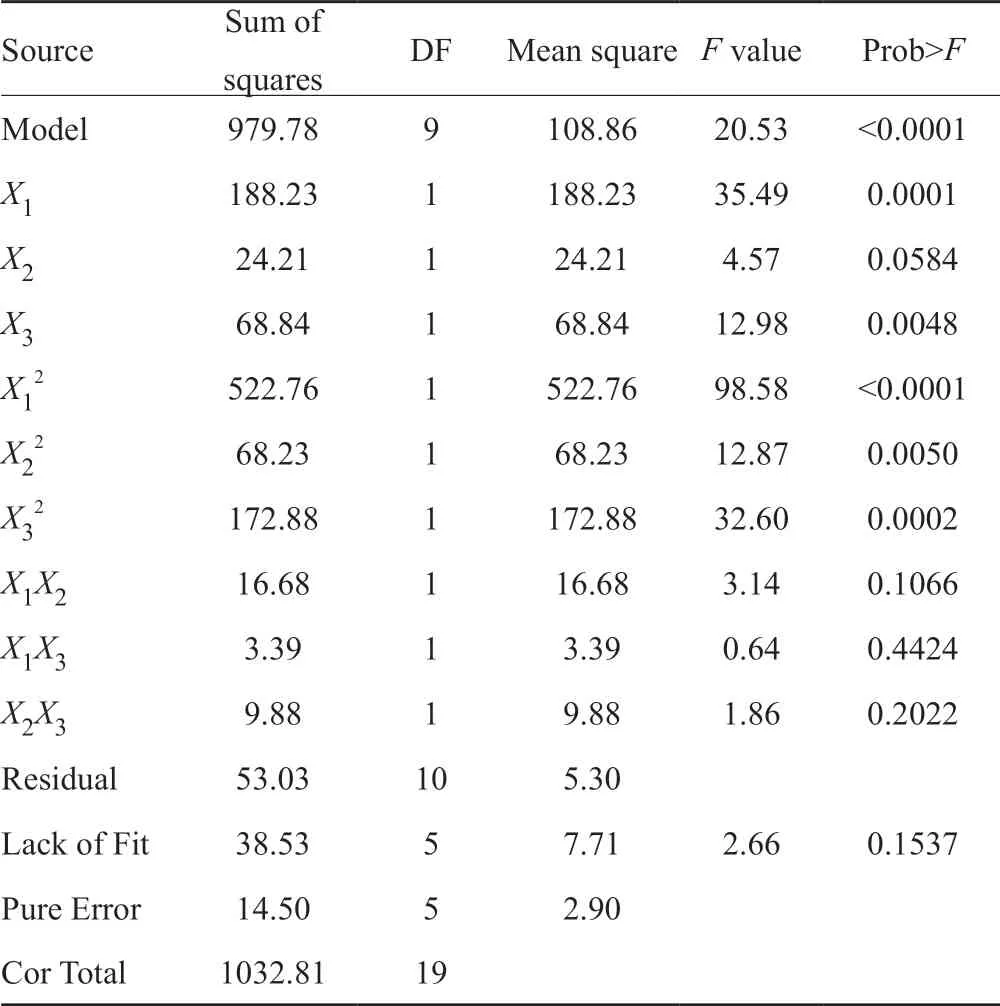
表7 响应面模型的方差分析Tab.7 Analysis of variance (ANOVA) for the response surface quadratic model
Three dimensional response surface plots graphically represented regression equations and were generally used to demonstrate relationships between the response and experimental levels of each variable.These surface plots, therefore, allowed for visualization of the optimum levels of each variable for the maximum production of microbial metabolites[20].
Fig.1~3 showed the response surface plots for the present study and illustrated the pair-wise interaction of the three variables.The predicted maximum doramectin production (101.29mg/mL) derived from RSM regression was obtained when the concentration of 18g/L dry yeast, 0.16g/L MgSO4and 0.09g/L NH4Cl, respectively.Doramectin production in the optimized media was 103.54g/mL (the average value of three replications), and the production increased 1.80 times compared with that using the original medium (36.93g/mL).
4 Conclusions
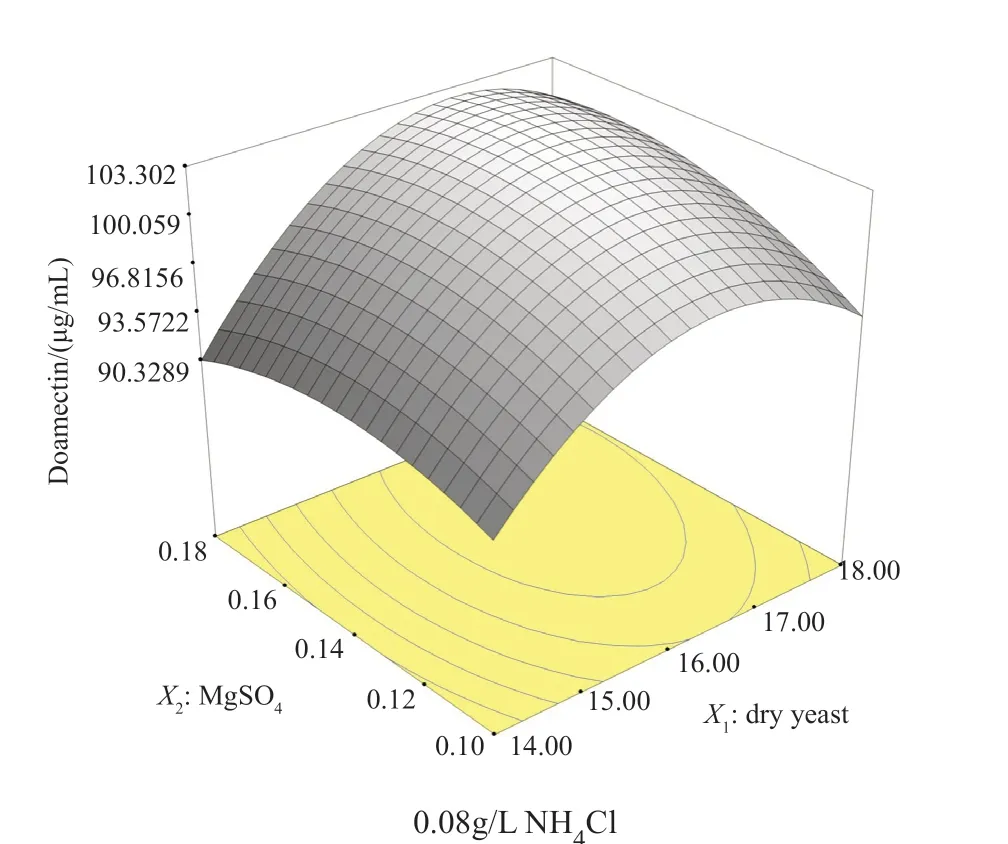
图1 干酵母粉和MgSO4对多拉菌素产量的影响Fig.1 Effect of dry yeast (X1) and MgSO4(X2) on doramectin production
RSM was carried out to optimize the medium components for doramectin production ofStreptomyces avermitilisXJ-8-115.A highly significant regression equation obtained was very serviceable for confirming The production increased 1.80 times compared with that using the original medium, which was 36.93mg/mL, with only 2.22% differences compared with the forecast by RSM.This study proved that the statistical experimental designs provide an efficient and economical measure for optimizing information on the effects of doramectin.the optimum concentrations of components that have significant effects on doramectin.The optimal supplementary components (per liter) consisted of 75g corn starch, 18g dry yeast, 1.35g KCl, 0.16g MgSO4, 1.8g K2HPO4·3H2O, 0.012g FeSO4·7H2O, 0.045g Na2Mo4·2H2O, 0.09g NH4Cl, 0.005g CoCl2·6H2O and 2g CaCO3.Under the optimal condition, 103.54mg/mL of doramectin could be produced in practical experiment.
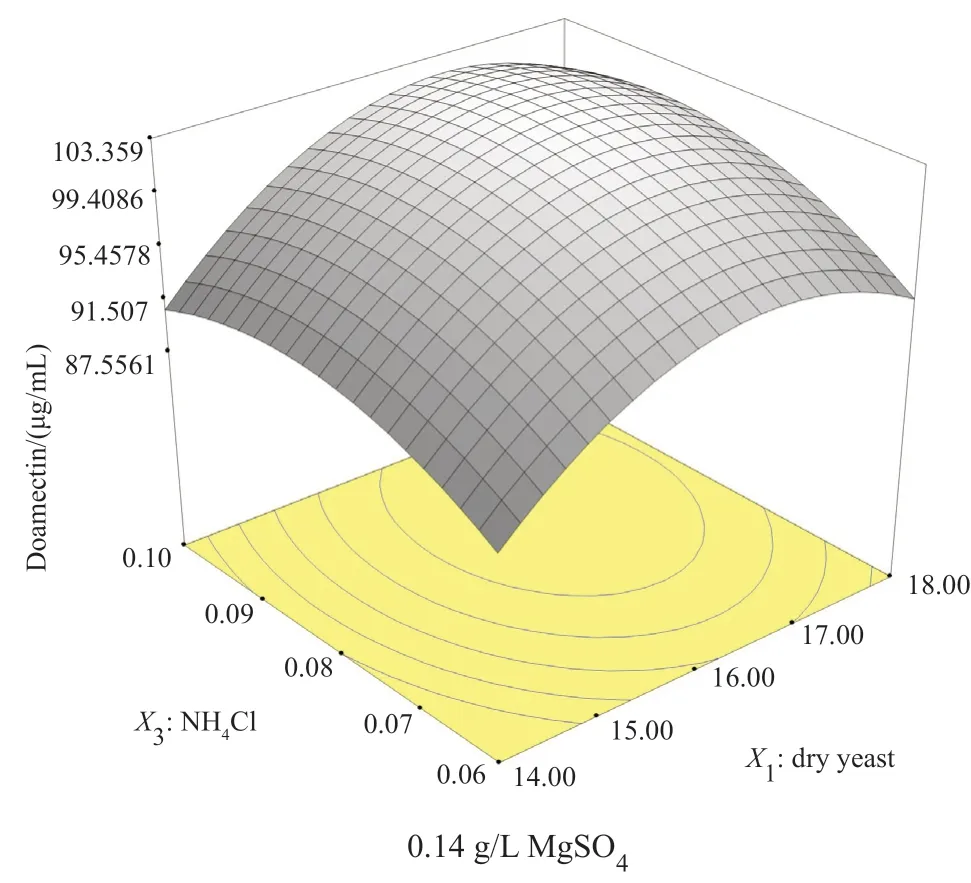
图2 干酵母粉和NH4Cl对多拉菌素产量的影响Fig.2 Effect of dry yeast (X1) and NH4Cl (X3) on doramectin production
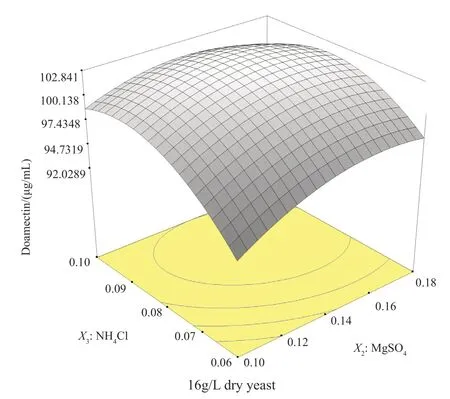
图3 NH4Cl和MgSO4对多拉菌素产量的影响Fig.3 Effect of MgSO4 (X2) and NH4Cl (X3) on doramectin production
